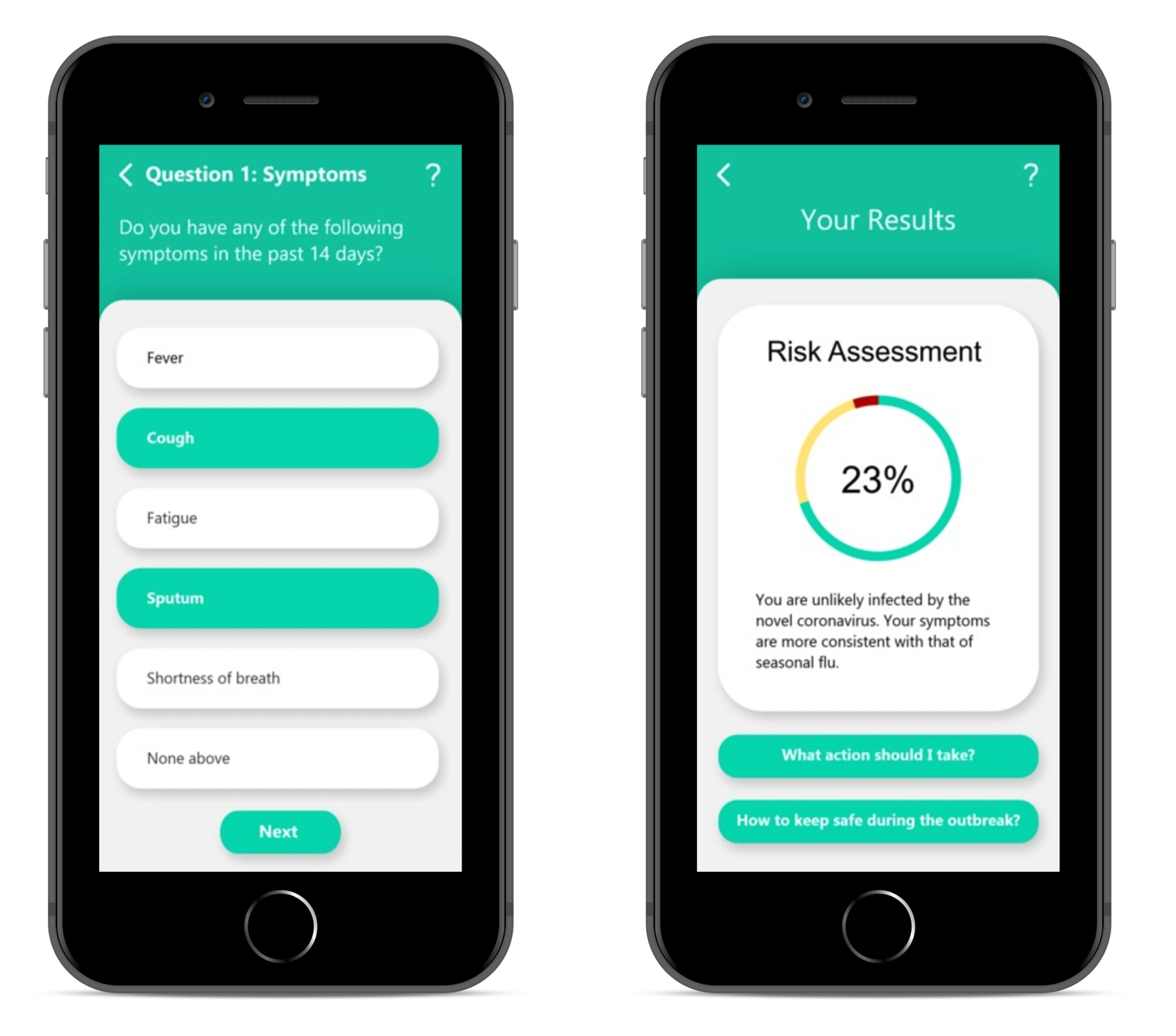Students build apps with Radar to address the world’s biggest challenges
Alongside developer-first companies like Google, AWS, GitHub, and MongoDB, we recently partnered with Major League Hacking (MLH) to provide students with the resources they need to build innovative location-based projects.
Over the last few months, we’ve seen aspiring engineers and student hackers from across the world use Radar to build apps that help society and improve lives. To date, we've participated in 25 hackathons and we've reviewed nearly 50 amazing projects.
Here are a few of our favorites.
COVID-19 Self-Diagnosis
In response to the growing pandemic, a group of students developed the COVID-19 Self-Diagnosis WebApp. By gathering geographical, clinical, and travel history data from users, the app is able to predict a user’s risk of COVID-19 infection and provide an action plan according to their risk rating. With this information, a user can adequately assess their personal risk and assuage any uncertainty around the outbreak.
The team was inspired by the diagnostic tools built in countries like China and South Korea, which didn’t yet exist in the US on a large scale.
Using Radar, the team created geofences around heavily-infected zones based on assessed geographical risk factors. In the future, the app could alert users if they found themselves in outbreak hot zones.

COVID-19 Self-Diagnosis won Most Creative Radar Hack at HackNYU 2020. It was built by Edwin Carbajal, Jerry Jia, and Brandon Liang.
Grocer 2.0
Grocery shopping during the COVID-19 crisis is challenging for everyone — shoppers navigating crowded stores, employees working tirelessly to stock the shelves, and vulnerable populations who need supplies, but cannot risk infection.
Grocer 2.0 is an app that taps the community in order to safely supply those in need with resources, as well reduce the strain on store employees.
Here’s how it works: at-risk customers can create an online grocery list through the Grocer app. Those orders will then be fulfilled by shoppers who are not high-risk and are already shopping for themselves. As a reward for helping out members of their community, shoppers can earn small discounts along the way. Once the order is complete, the store will notify the at-risk customer that their order is ready for safe pick up.
Location is essential for making the system work. The Grocer 2.0 team used Radar’s Places database to automatically geofence stores supported by their app. Whenever a shopper entered a supported store, the app sends a push notification letting them know they can fulfill a grocery list for an at-risk community member. If a shopper leaves the store before completing the requested list, the app will automatically free up the list for other shoppers to fulfill.
Grocer 2.0 won Most Creative Radar Hack at Hack Quarantine. It was built by Dragon He and Leon Si.
Dropp
Dropp is a peer-to-peer ground shipping service that allows people to deliver packages while commuting along their regular route — and earn extra cash along the way.
Because Dropp involves package handoffs at specific locations between numerous people, the team needed geofencing functionality and dynamic tracking updates when users enter or leave the geofence. The team opted to use Radar because of its ability to programmatically generate and manage many geofences at once.
Dropp won Most Creative Radar Hack at CruzHacks2020. It was built by Kamil Kisielewicz, Rohan Pandeym, Shivansh Rustagi, and Miguel Tenant de La Tour.
Fireguard
Following the devastating forest fires in Australia, a group of students decided to use their knowledge of hardware and software to create a device which could prevent these tragedies in the future. They built Fireguard, an Internet of Things solution designed to detect and prevent forest fires at the instant they arise.
By placing an IoT device in different locations in a forest, the team was able to monitor important vitals about the environment and detect sudden changes in temperature, CO2 levels, atmospheric pressure, and volume of total organic compounds.
The team then retrieved this information and created a unique web user interface that responded to the real-time changes in data. The team leveraged Radar to create geofences around the impacted area and warn people nearby to evacuate at the right time.
Fireguard was built by Advitya Chhabra, Tyler Pinto, Vardan Sawhney, and Max Zhou at QHacks2020.
Student developers will have access to Radar at many more hackathons throughout the year. You can follow along with the latest and greatest projects here.
For all developers, Radar offers a generous free tier to get you started on building with location.
If your organization is building an app related to COVID-19, you can also apply to get 1 year of Radar for free through our startup program!